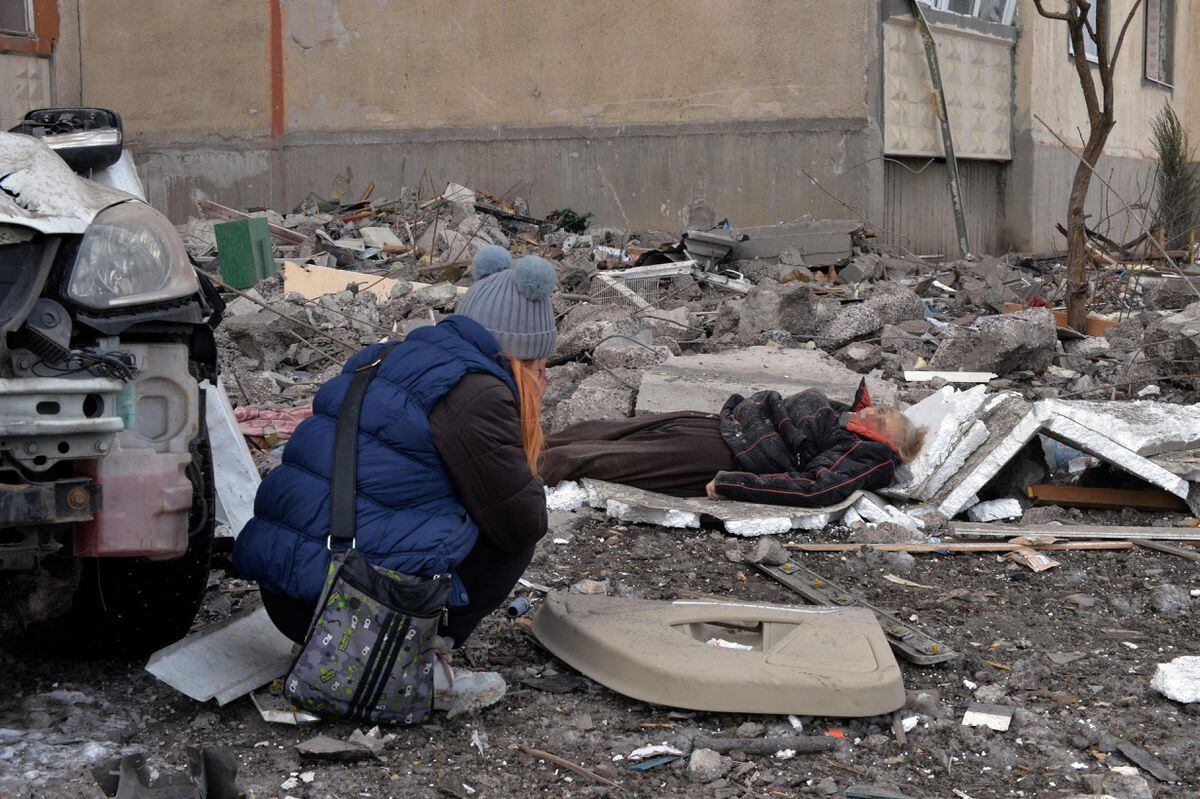The Kiev government raised this Sunday to 11,000 the number of Russian soldiers killed since Moscow began the invasion of Ukraine on February 24.
The figure is 22 times higher than that recognized so far by the Kremlin, which has only confirmed the death of 498 members of its Army.
He did it on March 2 – and he has not commented on it again – the same day that Ukraine stated that the casualties among the Russian ranks amounted to 5,840, almost 10 times more.
And neither of the two versions comes close to the count managed by the United States, between 1,500 and 2,000 Russian soldiers killed in the first four days of the conflict.
This distortion in the balance of deaths, which also extends to the number of deaths among the civilian population and among Ukrainian soldiers, shows the other war in the making: that of the account of what happened.
"The propaganda is not only directed abroad but also inward, both towards the civilian population itself that supports the war effort and towards the members of the Armies that carry it out," analyzes Alejandro Pizarroso Quintero, an expert in propaganda, in the article
Aspects of war propaganda in the most recent armed conflicts.
More information
Follow the last hour of the war in Ukraine, live
Precisely the differences in the numbers of dead soldiers put forward by Kiev and Moscow explain the story that each of the two countries wants to offer their own.
Ukraine, which claims to have killed 11,000 Russian soldiers while hardly speaking of victims among its troops, encourages its population by extolling the success of the resistance.
Russia, on the other hand, acknowledges a relatively small number of deaths among its ranks, while speaking of some 2,000 Ukrainian military deaths and avoiding talking about deaths among civilians.
Its main objective is to encourage the support of Russian public opinion for the attack ordered by President Vladimir Putin against the neighboring country.
However, determining which data is correct is an arduous task, especially in an armed conflict, with very limited, if not no, access of independent observers to combat zones.
According to the latest data published by the Office of the United Nations High Commissioner for Human Rights (OHCHR, for its acronym in English), since the beginning of the conflict until this Sunday, 364 civilians have died, —of them, 25 children— and other 759 have been injured.
The balance only includes 13 dead and 52 wounded more than the last report of the agency, published just two days earlier, despite the upsurge in fighting and Russian bombing of civilian areas.
Only the latest update from the Ukrainian government, made on March 2, already raised the number of fatalities to more than 2,000.
"The real figures will be considerably higher, since the receipt of information was delayed in some locations where intense hostilities have occurred," acknowledged the OHCHR, which follows rigorous verification work to certify the exact number of victims.
It is precisely the herculean task of identifying each deceased that explains why in two days they have only been able to certify 13 new deaths.
And in the middle of the war, in the best of cases, the warring parties frequently resort to estimates.
It happened on February 28, when the Russian Army began to bomb the Ukrainian city of Kharkov.
The first information that began to circulate cited a message posted on Facebook by Anton Gerashchenko, an adviser to the Ukrainian Ministry of the Interior, who claimed that "dozens of people" had been killed in missile attacks by Russian forces.
That is, a range of between 21 and 99 civilians, feasible due to the level of destruction.
The note was picked up by dozens of international media.
However, the consensus balance that day was finally 10 fatalities in this Ukrainian city.
the power of numbers
“We live in a hypernumeric world preoccupied with quantification.
Therefore, to measure something, or at least to pretend to do so, is to announce its existence and point out its importance and political relevance”, analyze Peter Andreas and Kelly M. Greenhill in the book
Sex, Drugs and Body Counts
(Sex, Drugs, and Body Counts, Cornell University Press).
But, in addition, the numbers have, according to the experts, the power to give credibility to those who handle them and to promote or stop decision-making, regardless of whether they are true or not.
As Grenhill recalls, former US President Bill Clinton "seemed to preach his support for the Iraq war on the basis of an erroneous and inflated assessment of what caused the lack of decisive action [by the West] in the war in Bosnia (1992). -1995)” during a speech at the 2007 Aspen Festival of Ideas. The former president said then that some 250,000 people had died in Bosnia, a catastrophe that should be avoided in Iraq.
However, the researcher points out, the figure seems "closer to 97,000",
Once a number penetrates the collective imagination, especially if it is very high, it is difficult to banish it due to the power of credibility of the numbers that Andreas and Greenhill speak of.
A classic example is the results of a 1996 Unicef report, according to which, “in the last decade at least two million children had died in armed conflicts”.
The balance has continued to appear until a few years in different publications, despite the fact that the period to which Unicef alluded is between 1986 and 1996.
“Victim data is not simply a set of abstract numbers, but rather represents individual human beings,” OHCHR sources insist.
Accounting them correctly, they add, is "crucial" to claim subsequent responsibilities and dignify each of the victims.
Follow all the international information on
and
, or in
our weekly newsletter
.
Exclusive content for subscribers
read without limits
subscribe
I'm already a subscriber

